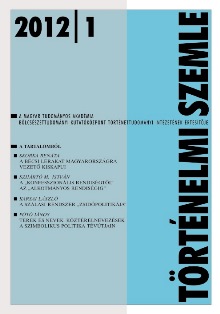Egy török utazó a magyar Szent Koronáról
A Turkish Traveller on the Holy Crown of Hungary
Author(s): Balázs SudárSubject(s): History
Published by: Magyar Tudományos Akadémia Bölcsészettudományi Kutatóközpont Történettudományi Intézet
Summary/Abstract: Since the Ottomans were as aware as anyone else of the importance that the Hungarian royal crown played in the legitimation of rule over the country, they gradually formed their own views regarding this symbol of power. Already in 1529 they claimed that the crown of the Hungarians had originally came from the famous Sasanid ruler, Khusrau I. The legends were most completely summarised by Evliya Çelebi in various places of his Seyahatname. His information can be divided into three groups. The first concerns the ancient history of the crown. According to him, the diadem originally belonged to Khusheng shah, the mythical Persian ruler who is held to have been the first crowned ruler of the world. The Hungarian crown is thus not only a crown among others, but the crown, the source of all legitimacy. From Khusheng it went to Alexander the Great (Iskender), and then to Menuchehr. At this point there is a roundabout way leading back to Khusrau I, and thence to the sons Menuchehr again, who flee from their country to search for a new homeland, which they finally find in the Carpathian basin and thus become the ancestors of the Hungarians. The second section of Evliya’s history is connected to the Ottoman conquest of Hungary and to sultan Süleyman. Following Hungarian sources, our traveller relates a false story, which he then further distorts with his own erroneous conclusions. The third section is the present of the author himself, that is, the year 1665, when he travelled to Vienna with the Ottoman embassy which ratified the peace of Vasvár. Then he allegedly saw the crown hung above the ruler’s head. Although the travel to Vienna is attested by historical sources, it is certain that Evliya did not see the diadem itself. The detailed description that he offerred came from a literary source, the 10th-century chronicle of Tabari, which precisely concerned Khusrau I. Evliya thus presents a more or less complete history which, however, contains very few real elements. It was, nevertheless, highly suitable for giving support to the Ottoman claims to the rule over Hungary.
Journal: Történelmi Szemle
- Issue Year: 2012
- Issue No: 01
- Page Range: 17-36
- Page Count: 20
- Language: Hungarian

